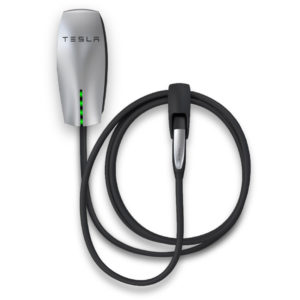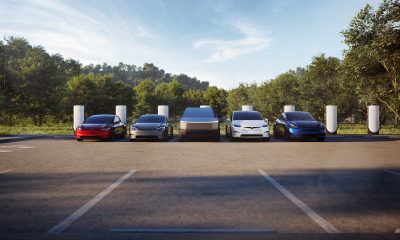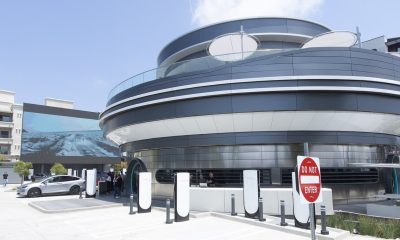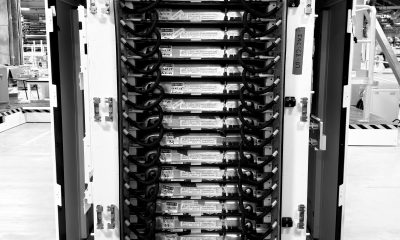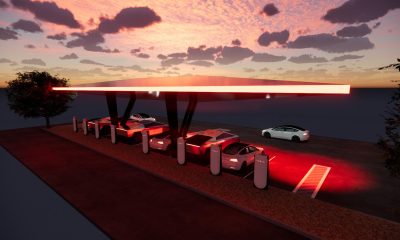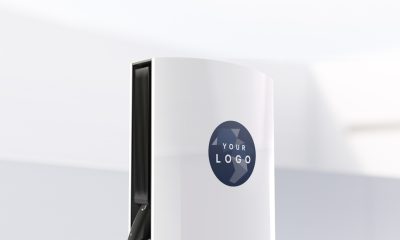Tesla Model S
Every New Tesla Owner’s Dilemma: Dual Chargers vs High Power Wall Connector (HPWC)
An analysis of the HPWC and Dual Charger options for charging the Tesla Model S.
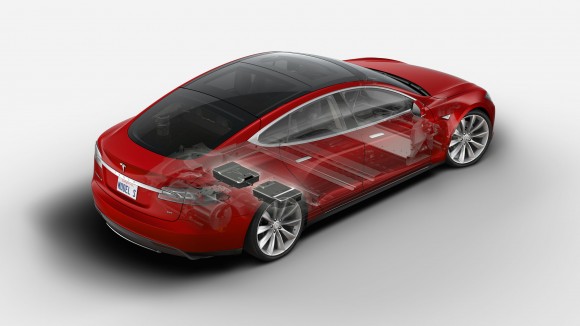
When you purchase a car, you typically buy what’s on the lot and it’s either fully loaded or stripped down with the bare necessities. Custom orders are few and far between. With Tesla you almost always end up configuring the vehicle to your exact specifications. While they do have inventory cars for immediate sale, they’re often used vehicles with a previous life as a service loaner or test drive vehicle.
There are really 3 kinds of buyers for the Model S when it comes to options:
- Those who opt for every available option and price is not a factor.
- Those that go for the bare minimum options and stretch their budgets in order to get into the car. These are the owners with the stripped down Model S 60 kWh’s (or even 40’s!) with no Tech package etc.
- Those that are in between and select only those options that they really need in order to save money.
If you’re in category 3 then read on.
Two points that need to be considered when ordering a Tesla Model S is whether or not the High Power Wall Connector (HPWC) is really for you; a $1,200 option that provides two times the charging rate of the standard option.
The second point to consider is whether you want the on-board dual chargers,
another $1,500 option which allows twice the conversion capacity as the single charger when the power is available.
Originally the HPWC and Dual Chargers were a single option around $3,000 and later on Tesla split the options out. Why they did that is interesting and indicates that there maybe a reason for having dual chargers without the HPWC.
Also see: Should You Leave Your Tesla Universal Mobile Connector (UMC) Plugged In?
I drive a lot: 35K miles per year. Other than a relative who’s a full time truck driver, I drive more than anyone I know. I plan on driving my Tesla just as much. On a daily basis I range from 90 miles to 175 miles in a given day just based on my usual pattern of family shuttling and commuting.
Do you really need the Tesla High Power Wall Connector (HPWC)?
Tesla has a good charging speed calculator on their site. If you take a conservative 200 miles per day and charge on the “standard recommended” home adapter through a NEMA 14-50 outlet, you can replenish the battery capacity in 6 hours 48 minutes. This measure of time is somewhat misleading as Tesla tends to provide “best” numbers and, unlike an ICE car, charging from an empty battery state is faster than charging from 20% left. Assuming you don’t arrive home with 0 miles left, the time to charge could be a bit longer. Most people I know, once home from work, are there for a minimum of 8 hours thereby giving them a significant amount of time to charge up. While Tesla recommends the HPWC for anyone regularly driving over 100 miles a day, I think the guidance is incorrect and the HPWC is not needed for the most part.
That being said, there are possible edge cases where it could be needed:
- On-call type people that can come and go from the charge location with few hours each time and long times away from the charger. Doctors and other professions like that should carefully consider their patterns.
- People that can take advantage of time-of-use metering (discounted off-peak electricity rates) from their electricity provider. Here in Massachusetts you have to consume at least 2,500 kWh per month over a 12 month period to qualify and generally this doesn’t work for homeowners even with high energy consumption. My utilization can run as high as 2,296 kWh/month but this still wouldn’t qualify.
- The HPWC is one way to get a second charging cable. It’s not the most efficient way since a second mobile connector is just over half the price, so you’re better off buying that second mobile connector and leaving it connected in the garage.
- It’s for a business or public use environment. Here people need to come and go as fast as possible. Whether that’s your business or you decided to share your power via PlugShare or the like, then you’ll want to provide the fastest charge possible to get people moving on.
So you don’t need the HPWC. Also don’t forget that the HPWC requires a lot more power and will likely cost more to install than a standard NEMA 14-50. A NEMA 14-50 home installation can run between $1,000-$1,500 but this varies greatly depending on the distance that power lines needs to be pulled and the underlying power supply/infrastructure of your home set up. I was fortunate enough to have mine installed at $675 since, apparently, my infrastructure didn’t require too much of an upgrade.
Tesla Dual Chargers

If you don’t purchase the HPWC option do you really need dual chargers? Personally, unless you never plan on taking an extended road trip or don’t care about future proofing you car, the on board dual chargers could provide some tremdous value. It’s this very same reason why I modified my order at the last minute and added the dual charger option.
At home using a NEMA 14-50 or on the road using only the Tesla Superchargers network (ie, epic 12,000 mile Tesla road trip) you wouldn’t need dual chargers. The dual chargers provides no benefit in each of those scenarios.
However, by having the dual chargers, you’d be able to take advantage of several fast charge options out there while future-proofing your vehicle as public charging technology advances.
- Publicly available HPWC’s out there like those at a Tesla Store or Tesla Service Center or those shared by homeowners and businesses which will grow over time. To take advantage of max charge rates on these you need dual chargers. Not all HPWCs provide more than 40A though.
- Public EV Plugs (J1772) can go up to 70A. The number of these that are over 40A is very limited today but that is rapidly changing. To take advantage of max charge rates on these you need dual chargers.
- CHAdeMO outlets offer higher speed charging for those that can take advantage of them. Tesla has been promising an adapter for a while but has yet to deliver.
While dual chargers are an extra cost on top of an already expensive car, at roughly 1% of the cost of the car and potentially saving hours of frustrating wait time, I think the decision to get dual chargers is a no-brainer and provides some future proofing for the car. HPWC likely always an unnecessary expense.
Thoughts/comments? Would love to hear from you.
News
Tesla Model S makes TIME’s list of Best Inventions
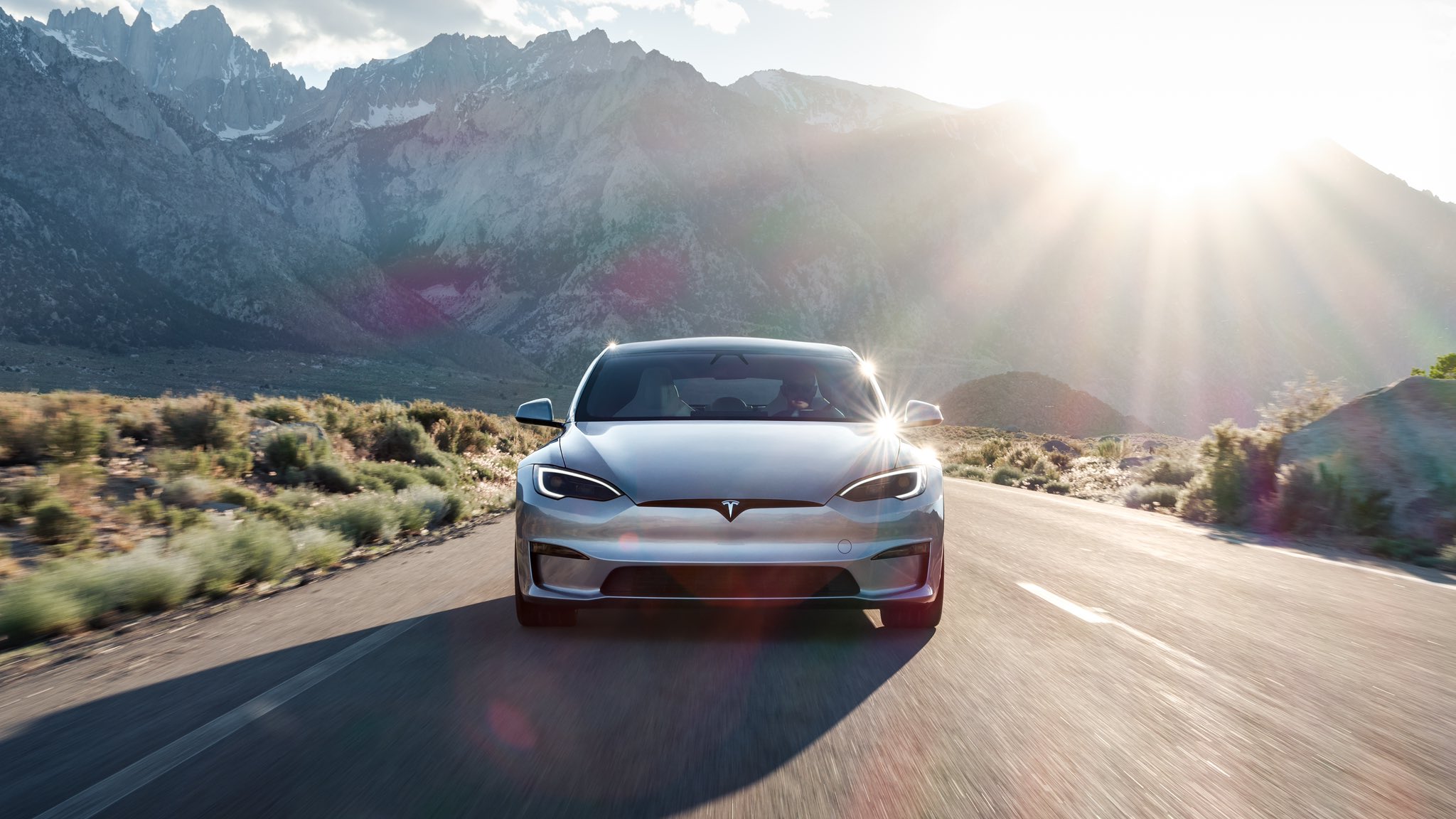
Tesla’s flagship sedan, the Model S, has officially been named one of TIME Magazine’s Best Inventions of the 2000s. It joins its sibling, the Model 3, which made the list in 2017.
The Model S is among the most crucial developments in the automotive industry in the last century.
Just as the Ford Model T made its mark on passenger transportation, becoming the first combustion engine vehicle to be successfully developed and marketed at a time when horse and buggy were the preferred mode of transportation, the Model S revolutionized things a step further.
Although it was not the first EV to be developed, the Tesla Model S was the EV that put EVs on the map. In 2012, TIME recognized the Model S as a piece of technology that could truly transform the car industry.
The publication wrote:
“This electric four-door sedan has the lines of a Jaguar, the ability to zip for 265 miles (426 km) on one charge—that’s the equivalent of 89 m.p.g. (2.6 L/100 km)—and touchscreen controls for everything from GPS navigation to adjusting the suspension.”
Looking back, TIME was right on. The Tesla Model S was truly a marvel for its time, and it, along with the OG 2008 Roadster, can be seen as the first two EVs to push electrification to the mainstream.
As TIME described this year, the Model S “proved to be a game-changing experience for electric vehicles,” and it ended up truly catalyzing things for not only the industry, but Tesla as well.
The Model S acted as a fundraiser of sorts for future vehicles, just as the Model X did. They paved the way for the Model 3 and Model Y to be developed and offered by Tesla at a price point that was more acceptable and accessible to the masses.
The Current State of the Tesla Model S
The Model S contributes to a very small percentage of Tesla sales. The company groups the Model S with the Model X and Cybertruck in its quarterly releases.
Last year, that grouping sold 85,133 total units, a small percentage of the 1.789 million cars it delivered to customers in 2024.
Things looked to be changing for the Model S and the Model X this year, as Tesla teased some improvements to the two cars with a refresh. However, it was very underwhelming and only included very minor changes.
Lucid CEO shades Tesla Model S: “Nothing has changed in 12 years now”
It appeared as if Tesla was planning to sunset the two cars, and while it has not taken that stance yet, it seems more likely that the company will begin taking any potential options to heart.
CEO Elon Musk said a few years ago that the two cars were only produced due to “sentimental reasons.”
Lifestyle
Tesla Model S Plaid battles China’s 1500 hp monster Nurburgring monster, with surprising results
There is just something about Tesla’s tuning and refinement that makes raw specs seem not as game-changing.

The Tesla Model S Plaid has been around for some time. Today, it is no longer the world’s quickest four-door electric sedan, nor is it the most powerful. As per a recent video from motoring YouTube channel Carwow, however, it seems like the Model S Plaid is still more than a match for some of its newer and more powerful rivals.
The monster from China
The Xiaomi SU7 Ultra is nothing short of a monster. Just like the Model S Plaid, it features three motors. It also has 1,548 hp and 1,770 Nm of torque. It’s All Wheel Drive and weighs a hefty 2,360 kg. The vehicle, which costs just about the equivalent of £55,000, has been recorded setting an insane 7:04.957 at the Nurburgring, surpassing the previous record held by the Porsche Taycan Turbo GT.
For all intents and purposes, the Model S Plaid looked outgunned in Carwow’s test. The Model S Plaid is no slouch with its three motors that produce 1,020 hp and 1,420 Nm of torque. It’s also a bit lighter at 2,190 kg despite its larger size. However, as the Carwow host pointed out, the Model S Plaid holds a 7:25.231 record in the Nurburgring. Compared to the Xiaomi SU7 Ultra’s record, the Model S Plaid’s lap time is notably slower.
Real-world tests
As could be seen in Carwow’s drag races, however, Tesla’s tech wizardry with the Model S Plaid is still hard to beat. The two vehicles competed in nine races, and the older Model S Plaid actually beat its newer, more powerful counterpart from China several times. At one point in the race, the Xiaomi SU7 Ultra hit its power limit due to its battery’s temperature, but the Model S Plaid was still going strong.
The Model S Plaid was first teased five years ago, in September 2020 during Tesla’s Battery Day. Since then, cars like the Lucid Air Sapphire and the Xiaomi SU7 Ultra have been released, surpassing its specs. But just like the Model Y ended up being the better all-rounder compared to the BYD Sealion 7 and the MG IM6, there is just something about Tesla’s tuning and refinement that makes raw specs seem not as game-changing.
Check out Carwow’s Model S Plaid vs Xiaomi SU7 drag race video below.
News
This signature Tesla feature is facing a ban in one of its biggest markets
The report indicates that Chinese government agencies have concerns “about failure rates and safety issues with the flush design.”
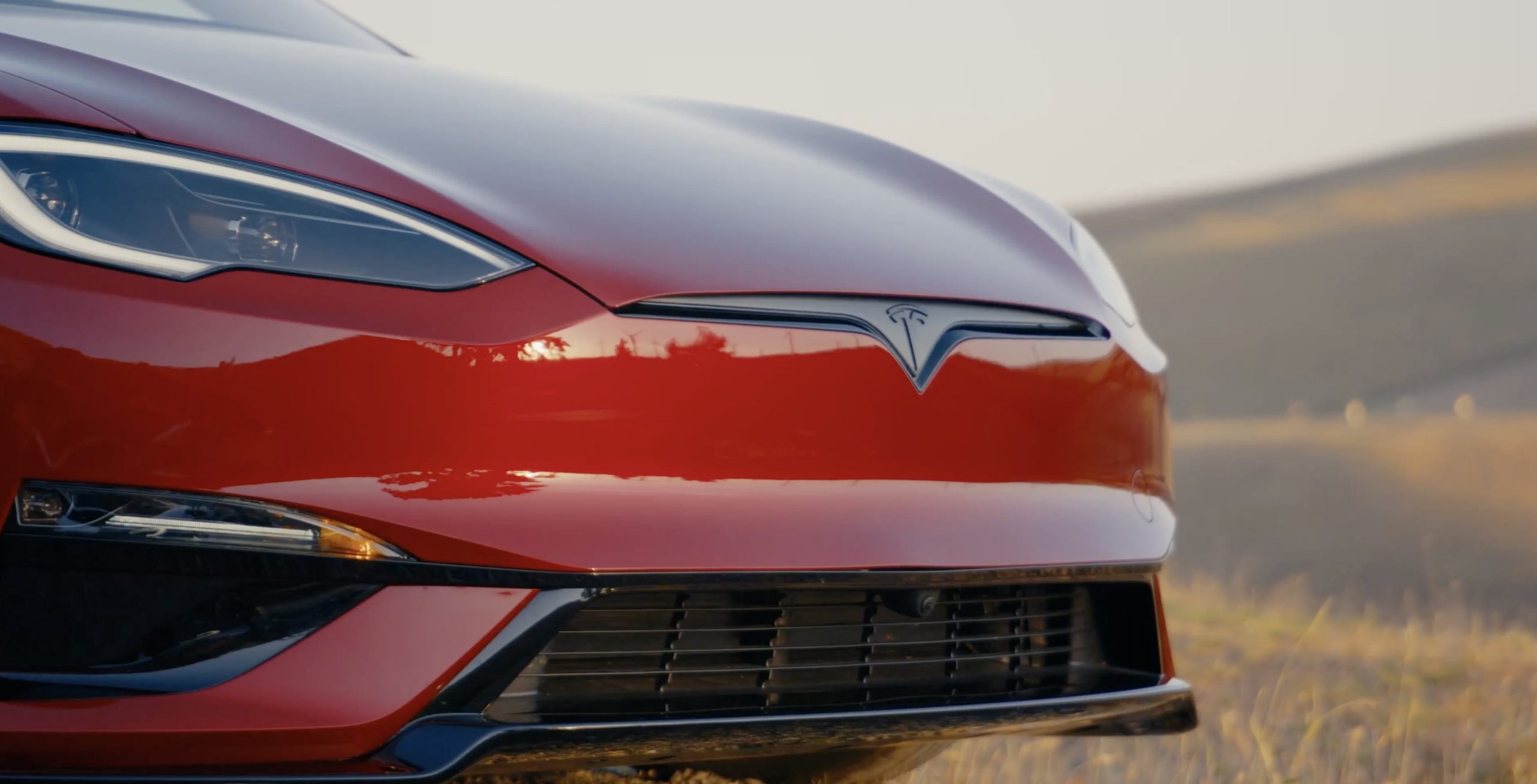
A signature Tesla feature is under fire in one of the company’s largest markets, as regulators in one EV hot spot are mulling the potential ban of a design the automaker implemented on some of its vehicles.
Tesla pioneered the pop-out door handle on its Model S back in 2012, and CEO Elon Musk felt the self-presenting design was a great way to feel like “you’re part of the future.”
It is something that is still present on current Model S designs, while other vehicles in the Tesla lineup have a variety of handle aesthetics.
According to Chinese media outlet Mingjing Pro, the company, along with others using similar technology, is facing scrutiny on the design as regulators consider a ban on the mechanism. These restrictions would impact other companies that have utilized pop-out handles on their own designs; Tesla would not be the only company forced to make changes.
The report indicates that Chinese government agencies have concerns “about failure rates and safety issues with the flush design.”
However, EVs are designed to be as aerodynamically efficient as possible, which is the main reason for this design. It is also the reason that many EVs utilize wheel covers, and sleek and flowing shapes.
However, the Chinese government is not convinced, as they stated the aerodynamic improvements are “minimal,” and safety issues are “significantly elevated,” according to The Independent.
The issue also seems to be focused on how effective the handle design is. According to data, one EV manufacturer, which was not specified in the report, has 12 percent of its total repairs are door handle failure fixes.
There are also concerns about the handles short-circuiting, leaving passengers trapped within cars. Tesla has implemented emergency latch releases in its vehicles that would prevent passengers from getting stuck in their cars in cases of electric malfunctions or failures.
However, evidence from the Chinese Insurance Automotive Technology Research Institute (C-IASI) suggests that 33 percent of door handles using this design fail to function after a side impact.
Obviously, Tesla and other automakers could introduce an alternative design to those vehicles that are affected by the potential restrictions China intends to impose. The regulation would take effect in July 2027.
-

 Elon Musk2 weeks ago
Elon Musk2 weeks agoSpaceX posts Starship booster feat that’s so nutty, it doesn’t even look real
-

 Elon Musk2 weeks ago
Elon Musk2 weeks agoTesla Full Self-Driving gets an offer to be insured for ‘almost free’
-

 News2 weeks ago
News2 weeks agoElon Musk confirms Tesla FSD V14.2 will see widespread rollout
-

 News2 weeks ago
News2 weeks agoTesla is adding an interesting feature to its centerscreen in a coming update
-

 News2 weeks ago
News2 weeks agoTesla launches new interior option for Model Y
-

 News2 weeks ago
News2 weeks agoTesla widens rollout of new Full Self-Driving suite to more owners
-

 Elon Musk2 weeks ago
Elon Musk2 weeks agoTesla CEO Elon Musk’s $1 trillion pay package hits first adversity from proxy firm
-

 News1 week ago
News1 week agoTesla might be doing away with a long-included feature with its vehicles

